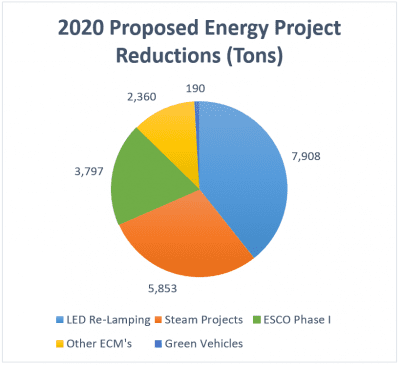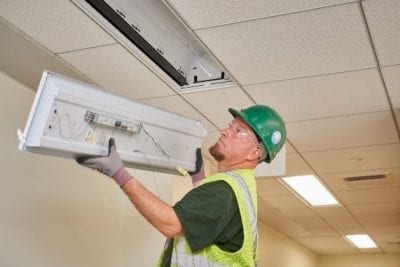 UConn’s Climate Action Plan (CAP), adopted in 2010, is aimed at mitigating the carbon footprint of the University. The CAP established a goal of achieving a carbon neutral main campus by 2050, with several interim milestones, such as a 20% reduction in greenhouse gas (GHG) emissions (from a 2007 baseline year) by 2020 and 30% by 2025. We work collaboratively with the Utility Operations & Energy Management group in Facilities to achieve these goals, primarily through a variety of strategic energy conservation projects.
UConn’s Climate Action Plan (CAP), adopted in 2010, is aimed at mitigating the carbon footprint of the University. The CAP established a goal of achieving a carbon neutral main campus by 2050, with several interim milestones, such as a 20% reduction in greenhouse gas (GHG) emissions (from a 2007 baseline year) by 2020 and 30% by 2025. We work collaboratively with the Utility Operations & Energy Management group in Facilities to achieve these goals, primarily through a variety of strategic energy conservation projects.
The University is well on its way toward meeting these GHG emissions reduction goals. As of 2017, a net reduction of 18,882 tons of GHG emissions from the 2007 baseline had already been achieved. Current estimates indicate that by 2020, emissions will be reduced by another 20,108 tons. Accounting for ongoing and proposed energy efficiency and clean energy projects, UConn is on pace to reduce annual emissions by a grand total of 32,600 tons by 2020. This represents a 21.4% reduction, saving almost 38 million kWh worth approximately $2.9M, despite considerable growth in enrollment and new buildings constructed since 2007.
Two especially impactful initiatives include the campus-wide re-lamping and steam line improvement projects. Project evaluation estimates show that retrofitting all interior and exterior lighting with LEDs will contribute nearly 40% of the carbon emissions reductions needed to meet the 2020 interim goal, with ongoing steam projects contributing 30%. Another 19% reduction will come from ESCO Phase I. Completed in 2017, this is an approximately 2,600 linear foot steam line replacement project, with associated energy conservation measures (ECMs) in seven campus buildings. In total, ESCO Phase I saves the University a projected $1.3M each year in utility costs.

Additional energy efficiency and GHG reduction projects underway include increasing the percentage of green (EV and hybrid) vehicles in UConn’s fleet and implementing other ECMs, such as the installation of variable frequency drives (VFDs) on motorized equipment that controls HVAC systems.
UConn’s 2020 Vision Plan includes energy efficiency-related metrics, like completing the SLED project by 2020 and reducing Energy Use Intensity (EUI) by 20% in buildings served by the Central Utility Plant. For more information about UConn’s 2020 Vision goals, click here.